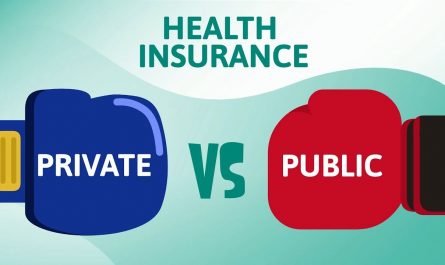Navigating the myriad of health insurance plans can be challenging, especially when acronyms like HMO, PPO, EPO, and POS come into play. Each of these models represents a managed care approach designed to balance cost, provider access, and patient choice. Rather than offering a one‐size‐fits‐all solution, these plans differ in how they structure their networks, coordinate care, and share costs with the insured. Understanding the nuances behind each option can empower you to select a plan that meets both your healthcare needs and your financial expectations.
The Managed Care Framework

Managed care is a strategy that insurance companies employ to control the cost and quality of healthcare services. It is built on the principle of coordinating care through specific networks of healthcare providers who agree to predetermined payment rates. In managed care systems, the insurer leverages a group of contracted providers to keep costs predictable while maintaining a level of quality control. Each plan type whether it restricts you to a narrow network or offers broader provider options aims to create a balance between affordability and flexibility.
At the core of these models is the concept of network participation. Providers who join these networks agree to accept set fees for services, enabling the insurer to negotiate lower costs. In turn, the patient typically enjoys lower premiums and more predictable out-of-pocket expenses, albeit sometimes at the expense of freedom to choose any provider. The structure and rules regarding network usage are what differentiate HMOs, PPOs, EPOs, and POS plans from one another.
Exploring the Distinct Models
Health Maintenance Organizations (HMOs):
HMOs are designed to be cost-effective by emphasizing preventive care and coordinated services. Under an HMO, you generally select a primary doctor who acts as the gatekeeper for all your medical needs. This physician coordinates referrals to specialists within a tightly controlled network of providers. Because services are largely restricted to in-network options, HMOs usually offer the lowest premiums and cost-sharing amounts. However, the trade-off is limited flexibility if you seek care outside the network (except in emergencies), the plan typically does not cover it. This model is well suited for individuals or families who do not mind a more structured system and are comfortable with a smaller network in exchange for lower costs.
Preferred Provider Organizations (PPOs):
PPO plans are built for flexibility. They feature expansive networks of providers, and you do not need to select a primary care physician or obtain referrals to see specialists. One of the key attractions of a PPO is the option to seek care outside of the network; although doing so usually results in higher out-of-pocket costs, it still provides a safety net for patients who travel frequently or desire greater choice. PPOs typically carry higher premiums and deductibles, reflecting the freedom they offer. They are ideal for individuals who value autonomy in choosing healthcare providers and are willing to pay a premium for that convenience.
Exclusive Provider Organizations (EPOs):
EPOs offer a middle-ground solution. Like HMOs, EPO plans restrict you to a network of doctors and facilities; however, they tend to provide a broader array of choices within that network. Unlike HMOs, you are usually not required to choose a primary care provider, nor are you forced to get referrals for specialist visits. This model allows you to bypass some of the administrative steps while still benefiting from negotiated in-network rates. The downside is that if you venture outside the network, coverage is generally not provided (except in true emergencies). EPOs often strike a balance between cost and flexibility, making them attractive for those who want a streamlined process without the stringent restrictions of an HMO.
Point of Service (POS) Plans:
POS plans blend characteristics of both HMOs and PPOs. With a POS plan, you generally choose a primary care doctor who coordinates your care, similar to an HMO. However, unlike an HMO, POS plans allow you to seek treatment from out-of-network providers, though typically at a higher cost. This option gives you greater flexibility if you need care that isn’t available within your network. The out-of-network benefit, however, is paired with increased cost-sharing and potentially higher deductibles. POS plans are especially useful if you value having a dedicated primary physician but also need the occasional out-of-network option, such as when traveling or when specialized care is not available locally.
Operational Mechanisms and Coordination of Care
The operational differences between these models are defined by how they manage and coordinate care. In an HMO, the system revolves around your primary care physician, who is responsible for monitoring your overall health, issuing referrals, and ensuring that the care you receive is both necessary and cost-effective. This gatekeeping model not only helps to reduce unnecessary services but also enhances continuity of care.
PPOs, by contrast, allow you to self-direct your care. Without the requirement for a primary doctor or referrals, you can directly schedule appointments with specialists. While this increases convenience and flexibility, it can also lead to higher overall costs if you frequently opt for out-of-network care. PPOs often come with a layered cost structure, where you pay a fixed deductible, followed by a coinsurance percentage until you reach your out-of-pocket maximum.
EPOs remove the need for a primary doctor and referrals, streamlining the process of accessing specialists while still enforcing network restrictions. This model is particularly appealing for those who want direct access to specialist care without administrative hurdles. Meanwhile, POS plans incorporate a hybrid approach. They encourage you to stick with a primary care provider for most services but still provide some reimbursement for out-of-network care if you need it. This dynamic system can be particularly advantageous if you require a blend of structured care coordination and occasional flexibility.
Financial Considerations and Cost Structures
One of the primary factors in choosing a health insurance plan is how each model handles cost-sharing and premiums. HMOs typically offer the lowest premiums because they limit you to a specific network and require you to work through a primary care physician. This often translates into lower deductibles and predictable copayments, making them attractive for budget-conscious individuals. However, the limited choice can be a drawback if you have established relationships with providers outside the network.
PPOs offer greater freedom but come at a price. Their higher premiums are justified by the extensive networks and the ability to receive partial reimbursement for out-of-network care. Deductibles and coinsurance rates in PPOs are often higher, and while you have more options, the cost of exercising that freedom can be significant. For those who need maximum flexibility and are willing to absorb higher costs, PPOs provide a compelling option.
EPOs generally fall in between HMOs and PPOs in terms of cost. They tend to offer moderate premiums with a relatively large network but do not cover any services outside that network. This balance can work well if you want more choices than an HMO provides without the full expense of a PPO.
POS plans offer an additional layer of flexibility by allowing out-of-network visits, though typically with a higher cost-sharing arrangement. They usually have a primary care component, meaning that while you benefit from lower costs when you stick to in-network providers, you still have the option to go out-of-network if necessary. This dual approach makes POS plans a suitable compromise for those who require a mix of cost-efficiency and provider freedom.
Practical Scenarios and Decision-Making
Consider a young professional who rarely visits the doctor and is generally in good health. This individual might find that an HMO offers the most cost-effective solution. With lower monthly premiums and predictable costs for routine visits, an HMO can help keep healthcare expenses to a minimum. Although the network is limited, if the professional’s primary care doctor and a few local specialists are included in the network, this restriction may not be a significant issue.
Now imagine a family with young children who values consistent access to a trusted pediatrician and wants to avoid high out-of-pocket expenses for routine care. For this family, an HMO might again be a favorable option due to its lower premiums and coordinated care model. However, if the family occasionally needs to see specialists who are not in the local network perhaps because they travel or live in a larger metropolitan area a POS plan might provide the necessary flexibility while still offering lower costs for in-network services.
In contrast, consider an individual who frequently travels or who prefers to have the freedom to see any doctor, regardless of location. In this case, a PPO could be the best option. The ability to access both in-network and out-of-network providers without needing a referral offers maximum flexibility, even though it comes with higher premiums and potential deductibles. Although the trade-off is increased cost, the value lies in having a wider choice and the ability to maintain continuity of care across different geographic locations.
For someone who seeks a middle-ground approach, an EPO might be the ideal solution. With an EPO, you can access a broad network of providers without the administrative requirement of selecting a primary care physician or obtaining referrals, yet you are still protected by negotiated rates for in-network care.
Regulatory Influences and Consumer Protections
The structure and cost-sharing features of these managed care models are shaped by both federal and state regulations. The Affordable Care Act (ACA) has set standards that all marketplace plans must follow, including the coverage of essential health benefits and limits on out-of-pocket expenses for in-network care. These requirements ensure a baseline level of protection and cost predictability across different plan types. For instance, regardless of whether you choose an HMO, PPO, EPO, or POS plan, if the plan is offered on a government exchange, it must cover a standard set of preventive services at no cost to you.
State-level regulations can further influence the design of these plans. Some states have additional consumer protections, such as rules against balance billing in emergency situations or mandates on network adequacy. These regulations help ensure that even if you choose a plan with a more restrictive network, you are not left vulnerable in the case of an emergency or when routine care is required outside your immediate geographic area.
Understanding the regulatory environment is essential for making an informed choice. It helps you grasp why certain plans have the cost structures they do and why network restrictions vary from one plan to another. It also provides insight into potential future changes that may affect your coverage.
Technological Innovations and the Future of Managed Care

Digital transformation is reshaping the way managed care plans operate, offering new tools that enhance both patient experience and operational efficiency. Telemedicine, for example, has become an integral part of many health insurance plans, especially in the wake of recent global health challenges. With telehealth services, patients can consult with their doctors via video calls, reducing the need for in-person visits and lowering overall healthcare costs. This is particularly beneficial for individuals in rural or underserved areas where access to healthcare facilities might be limited.
Additionally, mobile applications and digital portals allow consumers to manage their benefits, schedule appointments, and even file claims online with ease. These tools not only improve convenience but also enhance transparency by providing real-time information on costs, network providers, and claim statuses. Artificial intelligence and data analytics are further being used to predict healthcare needs, streamline claims processing, and detect potential fraud, leading to cost savings and more personalized care.
As technology continues to evolve, we can expect even more innovative solutions to emerge. For managed care plans, this could mean greater integration of digital health tools, improved patient engagement, and more efficient management of provider networks. The trend toward value-based care, where providers are incentivized to focus on outcomes rather than the quantity of services, is also likely to gain momentum. This approach, supported by technological advances, could further improve the quality of care while keeping costs in check.
Future Trends and Challenges in Managed Care
While technological innovation promises many benefits, the managed care landscape will continue to face challenges. Rising healthcare costs remain a persistent issue, and the balance between affordability and provider choice is an ongoing concern for both insurers and consumers. Managed care models will need to adapt to these cost pressures while maintaining quality care.
Another trend is the gradual convergence of plan features. In recent years, the differences between HMOs, PPOs, EPOs, and POS plans have blurred somewhat as insurers strive to create hybrid models that offer a blend of cost control and flexibility. For instance, some HMOs now offer limited out-of-network coverage, and certain PPOs have introduced features that encourage more cost-effective care within the network.
Consumer preferences are also evolving. With greater access to information, many people are becoming more proactive about managing their health and selecting the right insurance plan. This increased consumer engagement is likely to drive further innovation in plan design, with more customizable options that can be tailored to individual needs. However, increased complexity may also lead to confusion, emphasizing the importance of clear communication and user-friendly digital tools.
Policy changes at the federal and state levels will also play a critical role in shaping the future of managed care. Ongoing debates about healthcare reform, potential shifts toward value-based models, and changes in regulatory standards will influence how these plans are structured. Staying informed about these changes is essential for both consumers and employers as they navigate the evolving healthcare landscape.
Final Thoughts on Choosing the Right Managed Care Model
Selecting a managed care plan is a highly personal decision that depends on your healthcare needs, budget, and lifestyle preferences. If you value cost savings and are comfortable with a limited provider network, an HMO might be the most suitable option. For those who prioritize flexibility and the ability to see specialists without referrals, a PPO may be the best fit, despite the higher premiums. An EPO offers a balanced alternative, providing direct access to a broad in-network provider network without the need for referrals, while a POS plan combines the coordinated care of an HMO with the flexibility of some out-of-network benefits.
When making your decision, consider practical factors such as your current health status, how often you require medical services, and whether you have established relationships with particular healthcare providers. Additionally, think about your future needs and how changes in your lifestyle or health may impact your choice. For families or employers offering benefits, understanding the trade-offs between these models is crucial for designing a benefits package that meets the diverse needs of your team.
Ultimately, the key is to balance cost, convenience, and provider access in a way that aligns with your priorities. By understanding the distinctive features of HMOs, PPOs, EPOs, and POS plans and how they operate within the broader managed care framework you can make a more informed choice and ensure that you and your loved ones receive the quality care you deserve.
Conclusion
The world of health insurance is complex, but breaking down the managed care models into HMOs, PPOs, EPOs, and POS makes it easier to understand how each plan works. Each model offers a unique combination of cost-control, flexibility, and network structure. While HMOs typically offer lower premiums and cost-sharing with a more restrictive network, PPOs provide greater freedom at a higher cost. EPOs strike a balance by offering no-referral access to an exclusive network, and POS plans blend the features of both HMOs and PPOs by requiring a primary care physician while still allowing some out-of-network coverage.
As you evaluate your options, consider your personal healthcare usage, financial capacity, and the convenience of accessing providers within your area. Technological advancements and ongoing policy changes will continue to shape the landscape, making it important to stay informed about new developments and how they might affect your coverage.
In the end, there is no one “right” answer; the best plan is the one that aligns most closely with your healthcare needs and financial circumstances. Armed with the information provided in this guide, you can confidently assess the differences between these managed care models and choose the option that offers the best balance of affordability, flexibility, and quality of care for you and your family.
This detailed guide provides a comprehensive look at the various managed care options available and the factors that influence your choice. By understanding the inner workings, cost implications, and practical scenarios associated with HMOs, PPOs, EPOs, and POS plans, you are better equipped to navigate the U.S. healthcare system and secure a plan that meets your unique needs.



